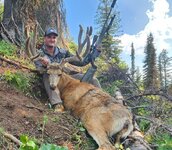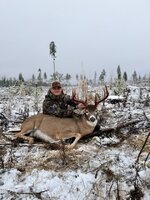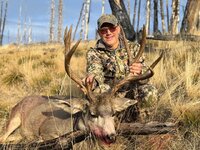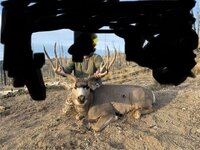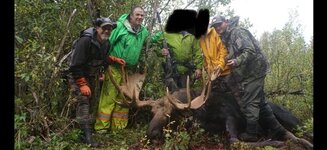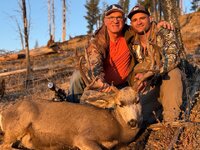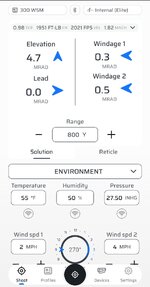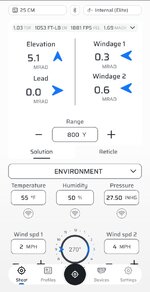Last year we did three open Shoot2Hunt with 34 students firing just over 40,000 rounds. The vast majority of shooters were “very” experienced shooters and hunters and all but 2-3 stated that they had a on demand killing range of 600 plus yards when they showed up. Cartridges ranged from 223 to 300 RUM’s, and most everything in between, with several well assembled and very accurate 7 PRC’s with 180gr ELD-M’s and large 6.5 magnums with 147gr ELD-M’s.
In pretesting in mountainous terrain that the students had never shot in or seen, on life size steel big animal targets painted naturally, and with all the scenarios and shots being recreations of actual shots from hunting the year prior- from just under 100 yards to 1,106 yards.
About a third of the targets people ran out of time before getting a shot off. Of the ones that were fired, first round hit rate in vitals from 100 to 427 yards was about 20%, and when including hits to the legs/guts/antlers about less than 40%. Of the target beyond 427 yards to 1,106 yards, first round hit rates were less than 10%, with most were being pure luck by the shooters own admission.
The performance of the cartridge and bullet had no correlation with hit rates with three exceptions- sub 427 yards, 223’s got almost all of the first round hits. Past 427 yards, the 22 creedmoor was the only one that stood out, and mainly from 2-3 shooters that used it.
@Dioni A did well comparatively with using a 6.5 PRC. Out of 28 shooters, the only one to get a first round hit on the elks vitals at 1,106 yards was from a 223 with 77gr TMK (though she had been through a partial course two years prior).
If you looked at a graph showing the amount of scenarios that the shooters got a shot off at all, the first round hits rates, and especially the second round corrections on wounded animals- 22cals and Dioni shooting his 6.5 PRC dominated. As recoil/rifle movement went up, success went down. Interestingly, even though Dioni shot his 6.5 PRC well in the course, he used a 22CM exclusively this year for hunting instead, and I believe he stated in part because of what he saw happening in the course he attended.
Removing myself, the two shooters with the highest hit rates on pretest (again never having seen or shot the targets or in that place at all) were the other two main teachers. Both using 308 winchesters, and 3-9x’ish MOA scopes- both were about 80% first round hit rate in vitals out to 700 yards.
Note:
During the course while training, and the last day of again shooting novel shots in the field that the shooters have never shot or seen before- out to 500 to 600 yards the hit rate was nearly identical between 223’s and 7 PRC’s- including 1st round vital hits which averaged over 70% in very high winds. Again, the 22 cm showed to have the best performance from 400-1,200 yards, with two (IIRC) shooters using 6 CM’s and doing about the same (that is over 80% first round hits out to 800 plus yards) as the 22cm users.
Most of the responses from people at the end was that it doesn’t really matter what the cartridge/bullet’s external ballistics within reason is up to about 500 yards- either you can call the wind well enough, or you can’t; there isn’t much difference when shooting side by side in realistic scenarios. Past 500 yards, fast 22’s and 6mm’s ruled. All/nearly all, stated that they would trade the ballistic performance advantage of the big magnums for the shootability and absolute ability to watch the rounds hit of the smaller cartridges.

